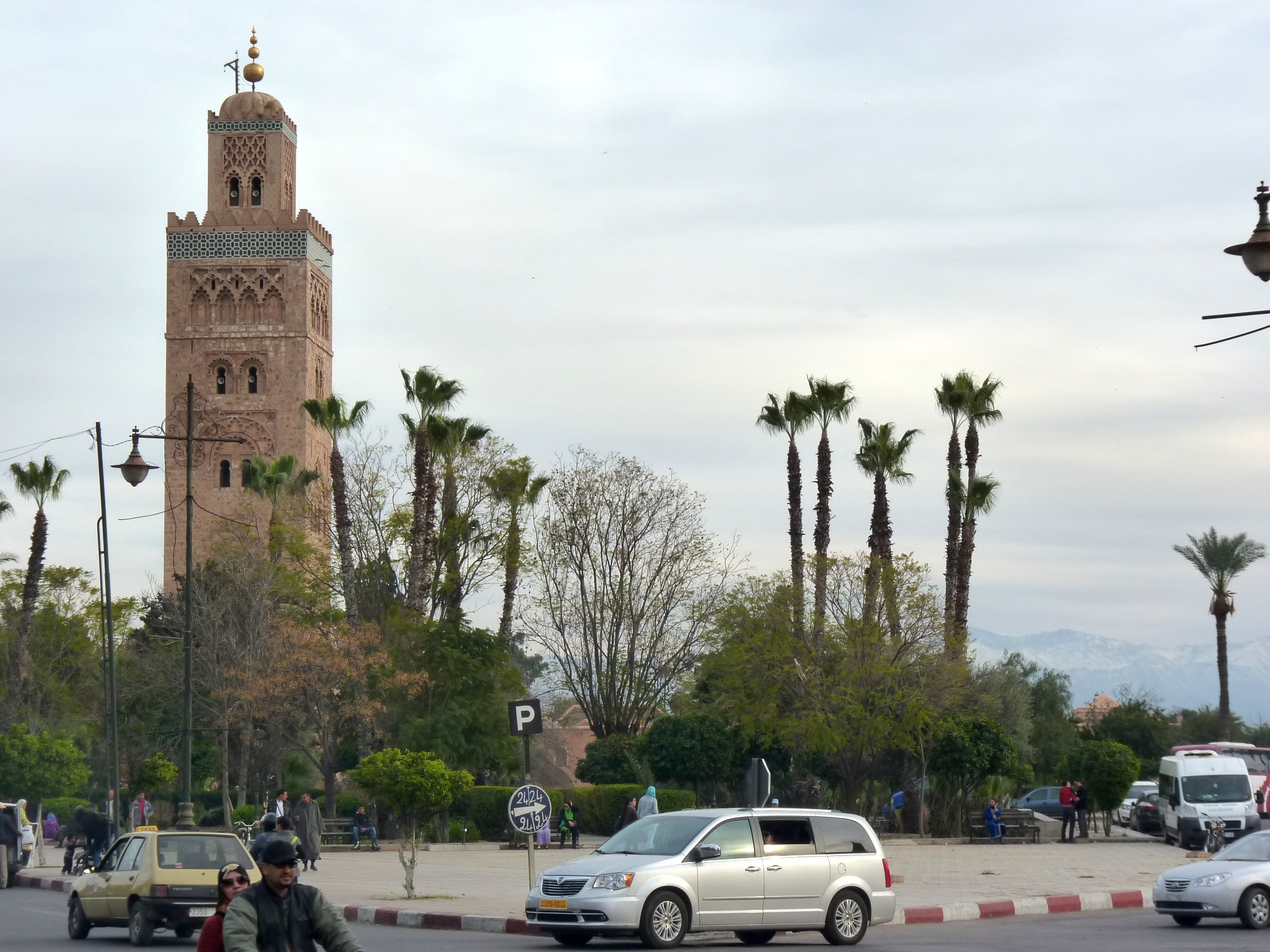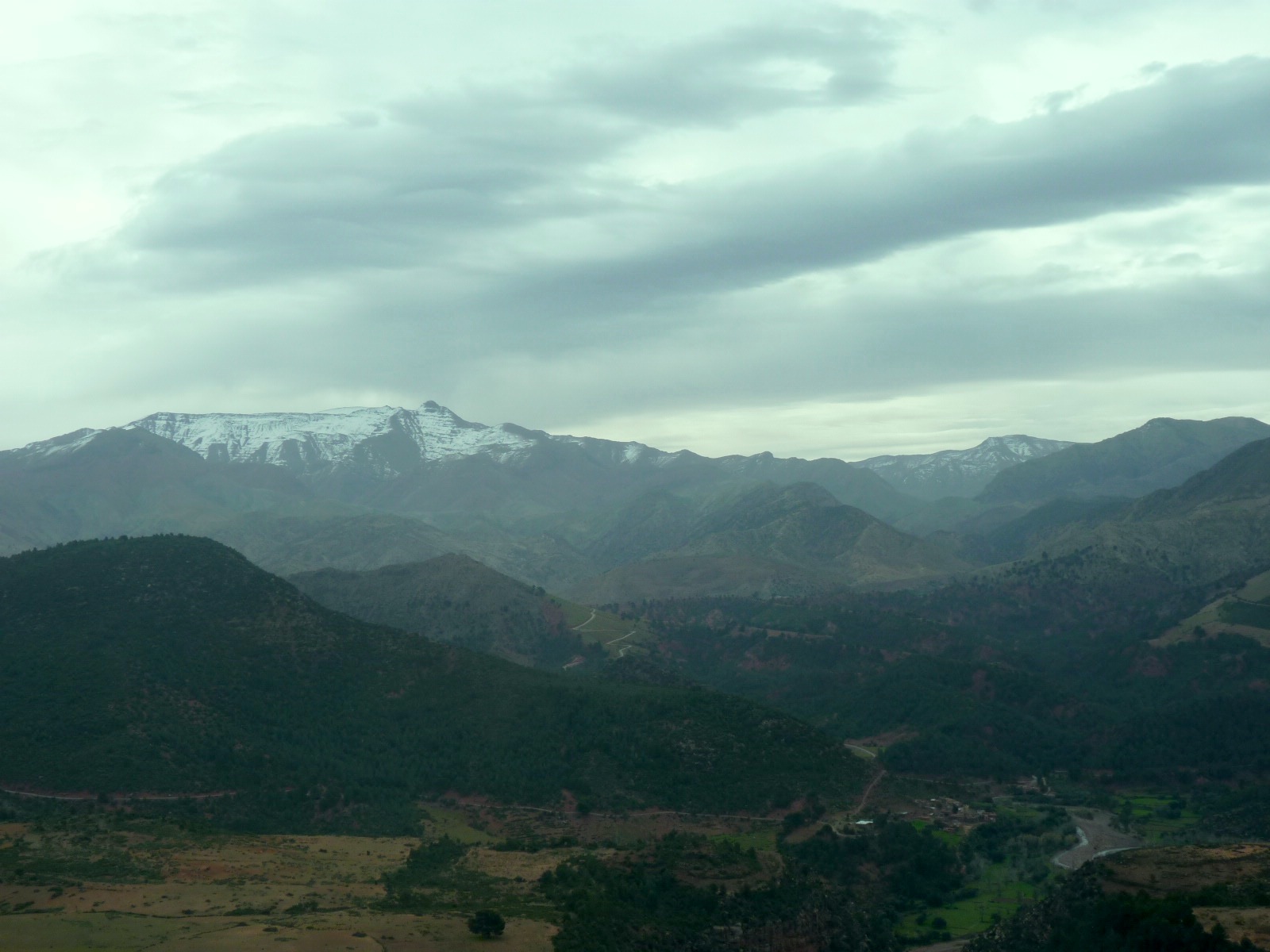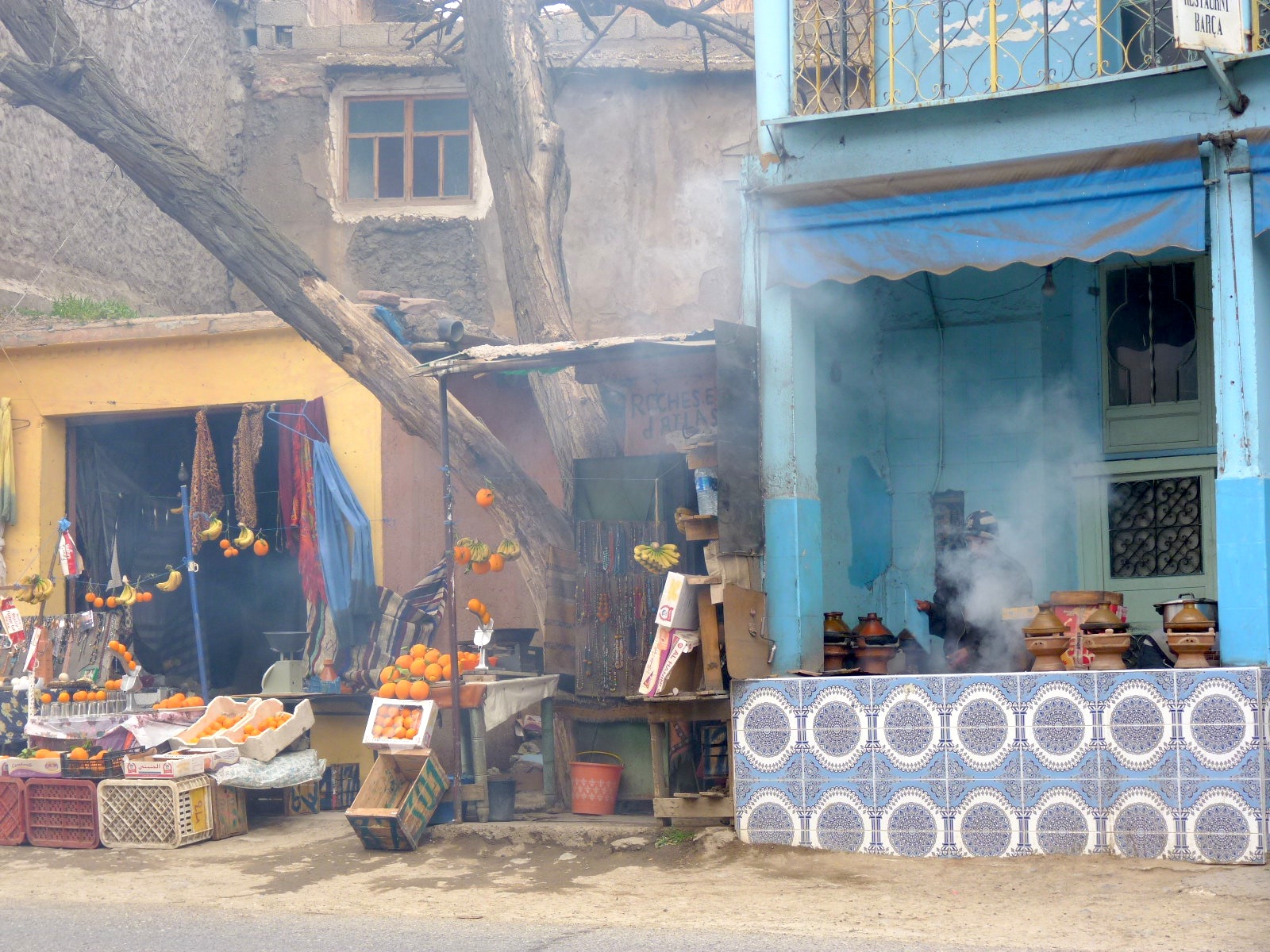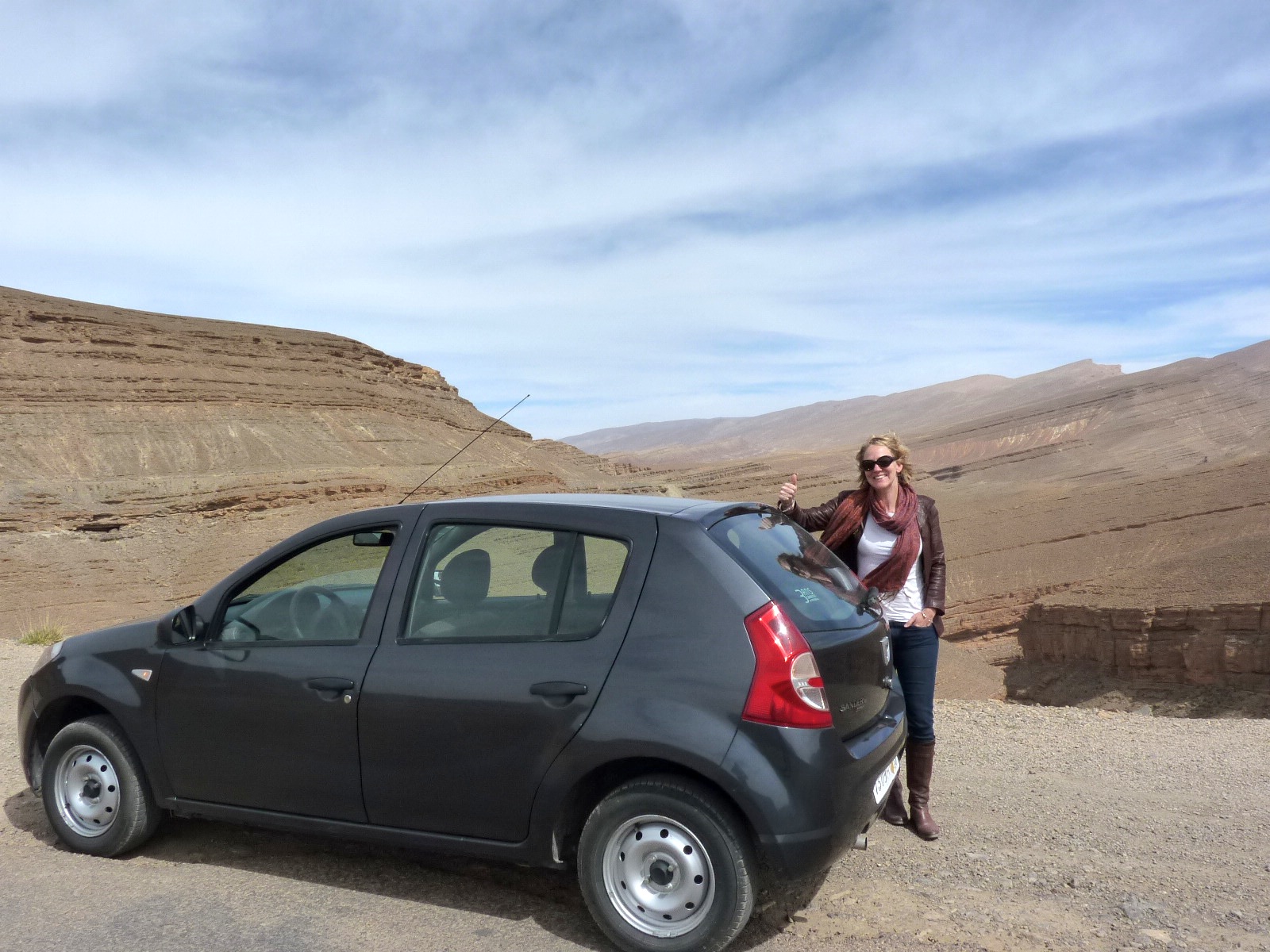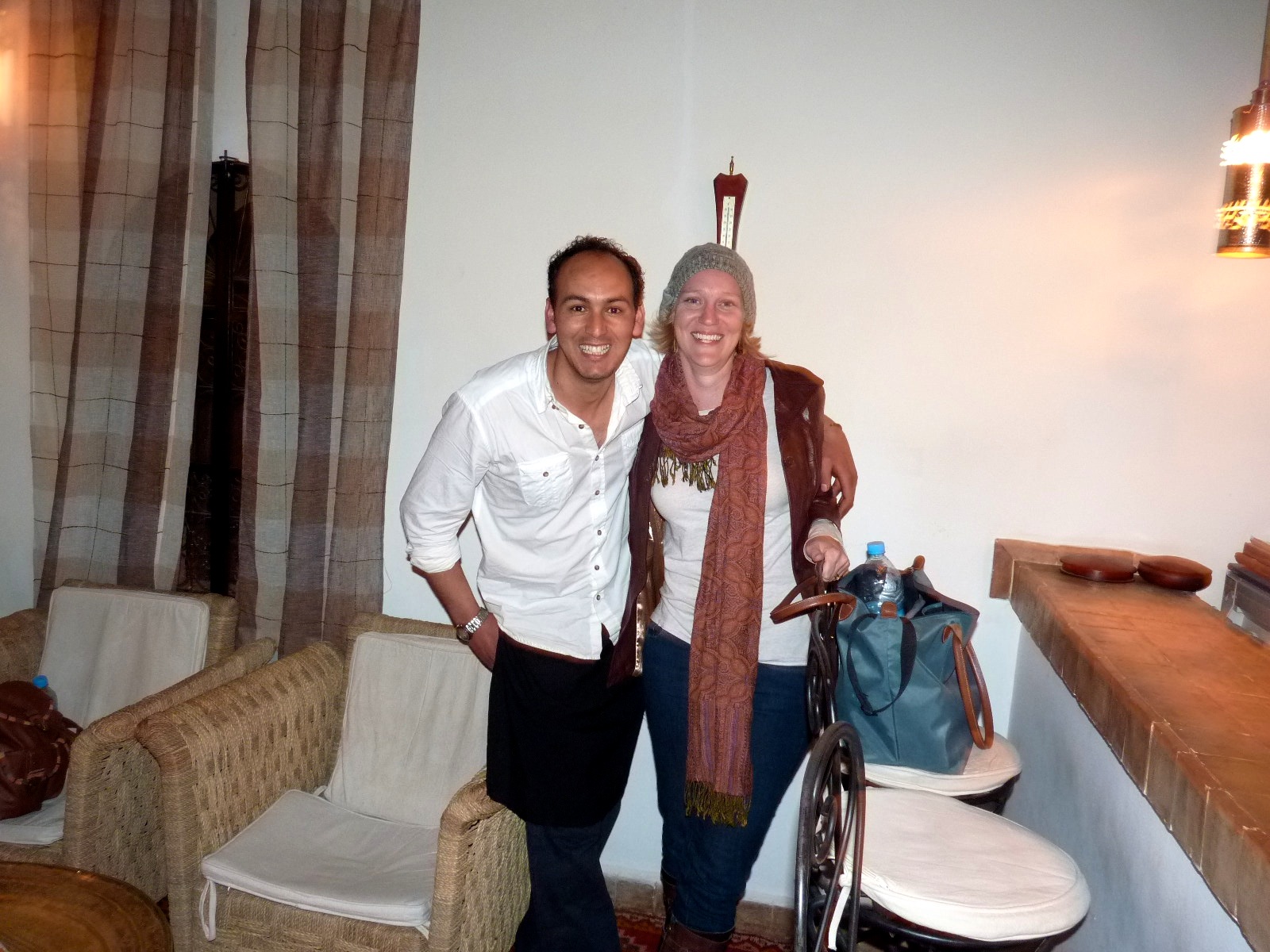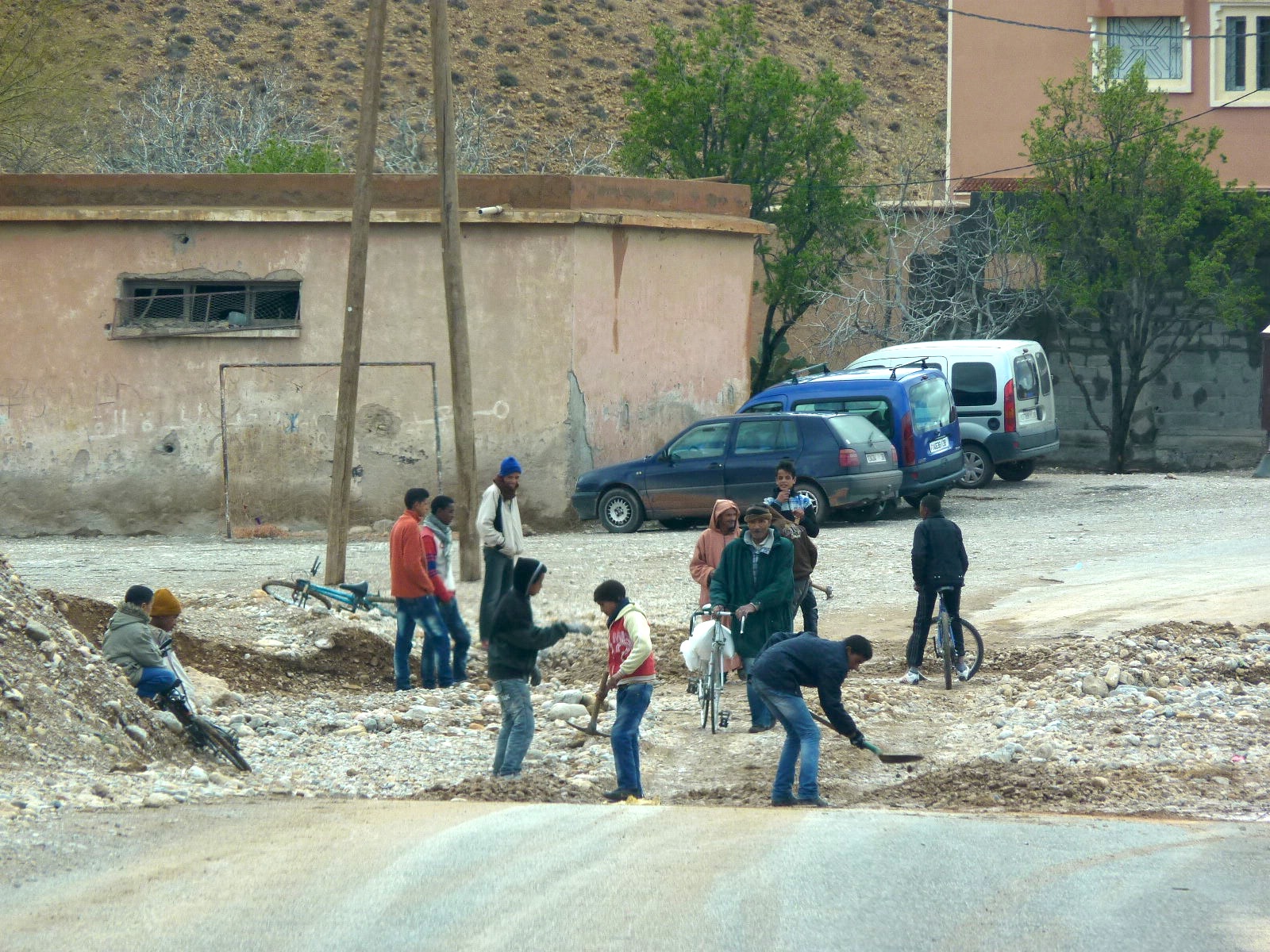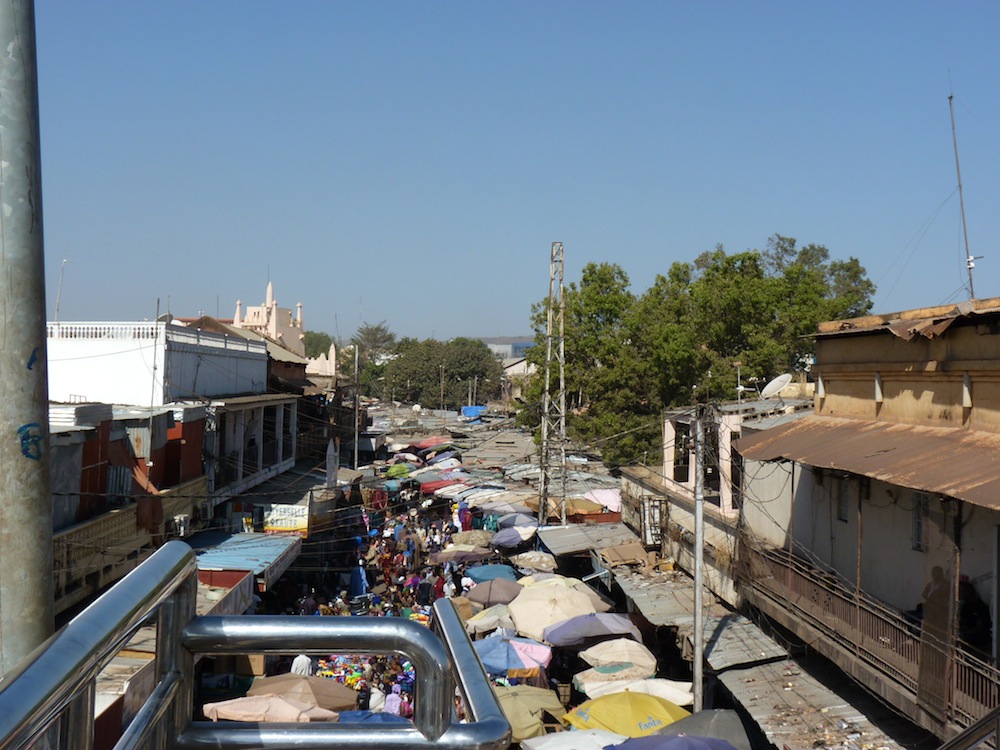I’ve been telling myself this a lot recently, ‘you’re exactly where you’re supposed to be.’ It really started in November with that unbelievable Oregon sunset (this one here). It’s a notion that’s been continuing ever since, mostly signaling itself through natural events, like sunsets, sunrises and moonscapes that are so beautiful I can’t help but be anywhere but exactly there, exactly where I’m supposed to be.
Festival Cante de las Minas
Last Friday night Jon and I had a blast. Near dusk we drove about 45 minutes south towards Cartagena to a small inland mining town called La Union for the 53rd Annual Festival Cante de las Minas, or "Songs of the Mines." The chance to go see an international flamenco festival was one not to pass up. Plus, the cheapy tickets were only 10 euro per person, how could we go wrong? The first half of the 10 day festival is all presentation of individual artists, and the second half is a competition. Since we were only going to afford one night of tickets, we opted for a competition night in order to see all the kinds of flamenco: singing, dance, and instrumentation.
As mentioned, La Union has a heritage in mining - primarily silver, alum, iron ore and other minerals; and apparently given the richness of the soil and the proximity to Cartagena (see my last post on the city), played an extremely important economic role in the Mediterranean economy (source: Discover Costa Calida). The mining community gave way to a rich folkloric tradition and La Union has now become home to not only the Festival we attended, but is clearly an arts center in the area. The large central indoor market was even converted into a performance venue. As an arts person, this union (no pun intended) between mining and arts is fascinating, and I love seeing how industry and culture are intertwined here.
Although the festival is billed as "international" and world-renowned - which I'm sure it is - I'm fairly certain we were the only English speaking people there, and certainly the only Americans within a 20 mile radius. Even the ticket office didn't have any English speakers (nor did they take credit cards...). But we showed up around 7pm, explored the little town, and settled down on the main plaza for a cañas (small glass of beer) and tapas. The square was filled with little kids jump-roping and families enjoying the coolness of the evening - such is the Spanish way - all generations out together. I love it.
I want to highlight a few moments in the night, because, in addition to the guitar and the harmonica, the singing and dancing soloists were truly amazing. I also have to say that not only were the musicians great, but it was just as much fun to watch the audience react, with a hearty, "Olé!!" when they were impressed. This, by no means, is not a culture that remains passive.
Baile - Dance
Woah. Before I say anything about traditional and professional flamenco dance. You just have to see it.
When I came to Spain with my family in 2001, we went to Sevilla and found an amazing locals tavern. There were about 10 chairs lined up, occupied by 2 or 3 guitarists and the rest clappers and singers. It wasn't a show, it was just a night out. People from the audience would come in and dance a bit and then switch out. Actually it's very similar to neighborhood dance parties in Mali and Senegal. But I digress. The point is that it was very participatory.
This was something entirely different. 1 Guitarist, 2 singers and 3 others clapping. And, then, that guy: Eduardo José Guerrero Gonzàlez. He strode in, more like glided in and proceeded to give 2 performances unlike anything I've ever seen. I'm not exaggerating. Sitting on the edge of my seat, with chills, I watched as this person danced with such a power, grace, passion and energy that I really have never seen. It was angular and sudden, but smooth and fluid at the same time. Jon and I were both dumbfounded at the end of his performance. In so many ways, the baile for men is easily linked to the art of bullfighting. The movements, the sudden attacks, the provocation - you see the matador in the dancer.
So as I was watching this incredible feat of human artistry I started to think about the art of bullfighting. It's not bullfighting season, we'll miss it by a few weeks (since Spain is essentially closed in August). I understand that there are a lot of people out there that think bullfighting should be banned, that it's cruel and dangerous. Well, I'm not disputing that it's cruel and dangerous. Just during our first few days here a young 16 year old boy was gored to death during a run of the bulls in Spain. And in the ring, it is a fight to the death - either the matador or the bull. But if you watch bullfighting - you see the art. You see the depth of the tradition, and the richness of the cultural expression. From the ceremony, to the running of the bulls, to the fights, to the costumes and fresh in my mind - to the dance - bullfighting runs in the veins of the Spanish. Art, music and dance runs in the veins of this culture as well. And it became crystal clear to me that you can't separate the two.
I think that in our American culture we rarely see the arts so clearly expressed in sport, and very rarely do we see sport reflected in the arts. But last night while I was watching the dancer, not only did I see the matador, I realized that in the matador is also the dancer. To see these two uniquely Spanish traditions blended into one was beautiful. It was the highlight of the evening for me.
Cante - Singing
When we left the show at 2am, Jon asked me, "Yeah, so the signing, it sounds like..." and before he could answer I said, "Quranic chant? Yes, it does and it should - it's the Moorish influence left on the music tradition." (Thank you Lewis & Clark for all those ethnomusicology classes!) Flamenco singing is powerful, intense and for lack of better words, just really interesting and impressive. We saw 4 singers as part of the competition, 3 men and 1 woman. The first singer came out swinging, with huge notes and unbelievable projection. The second slow played it a bit, was much more casual in his performance, but was really incredible. The third singer left us wondering how 10 euros could possibly be better spent (that was just before the dance performance!). His first song was quiet, the son Mineras - for the miners - and we both commented, "huh he's not as impressive as the last guy." But we were wrong. The control, the emotion, the tiny pitch fluxations (or half and quarter tones if you're into music theory), not to mention the stupidly long amount of time he for which he could hold a pitch, again, was just incredible.
The singers performed traditional songs. Even people in the audience next to us were singing along. I know this sounds silly, but it's something I love about Spain - just how Spanish everyone is. They wear their culture on their sleeve - it's beautiful.
Overall it was a truly wonderful evening of music and art. I'm so grateful that we were able to experience it!
What have some of your favorite/best overseas arts or cultural experiences been?
Marrakesh to Ait Ouffi
My first attempt at creating a weekly blog post has quickly failed. Sorry. But in all fairness the last 10 days have been a wild ride – from arriving in Marrakesh which is so different from what we expected it to be, to getting lost in the Medina, to getting sick to taking an adventure up and over the Atlas Mountains and somehow landing ourselves in the most beautiful chateau-like house by the good grace of a new friend, it’s been a long week!
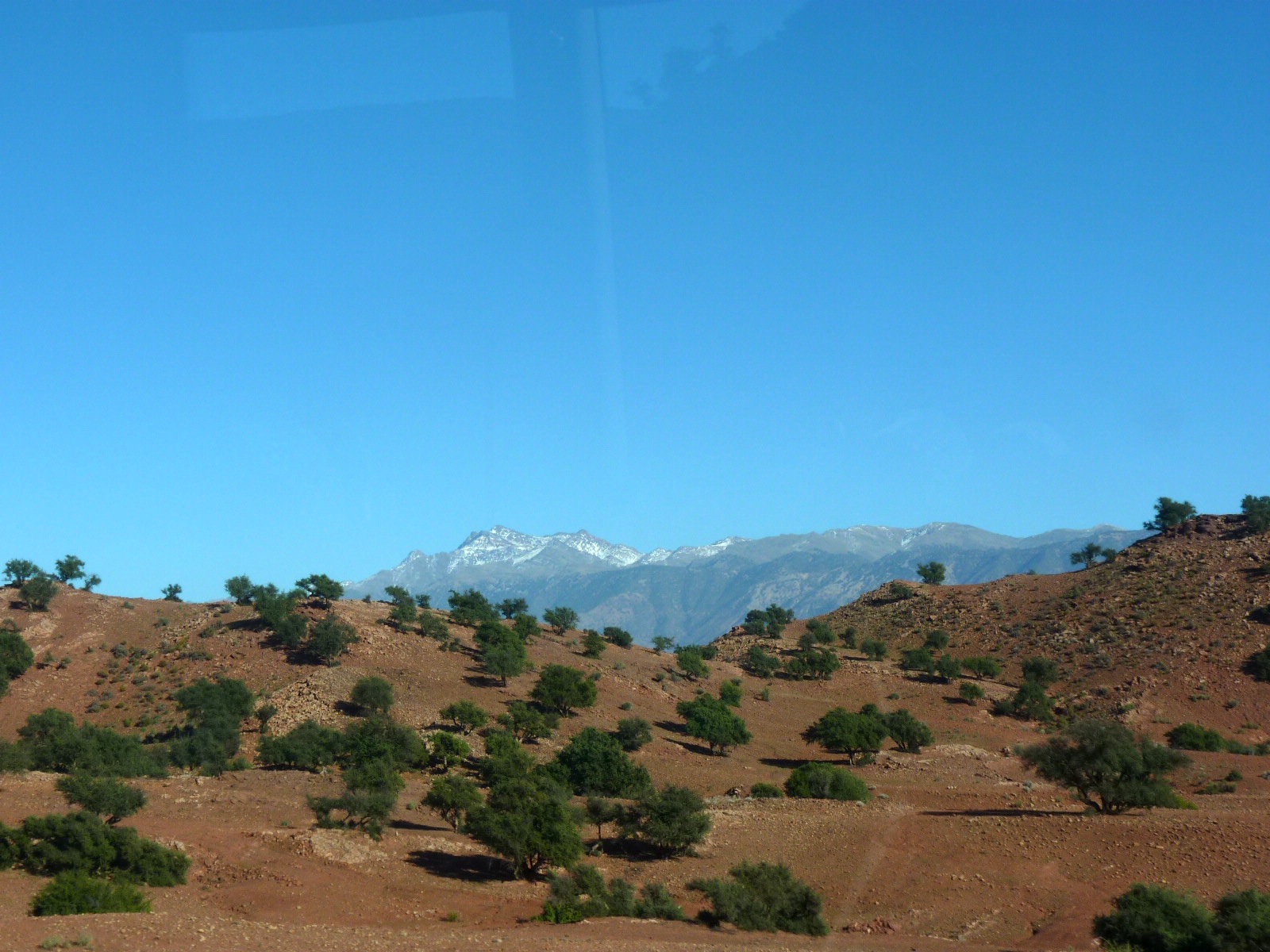
Marrakesh = Maz’ll catch ‘ya
We arrived in Marrakesh on a Monday night (I guess that was Feb 25), expecting to land in the middle of a crazy large, crowded city with tall buildings that felt super urban. Instead, we drove into an area that appeared out of a rural agricultural land, with buildings not more than 4-5 stories high, palm and olive trees everywhere. The snowpeaked Atlas Mountains rise sharply in the background, reminiscent of Denver, although the mountains are much closer, and the call to prayer ringing out from the mosques is a stark difference.
For Morocco’s main urban draw, Marrakesh is a puzzling place. It’s urban and the traffic stinks, but it’s incredibly green and lush. The Medina, with its 7km of walls, separates the Nouvelle Ville (the new city) that was built by the French.
The High Atlas
It takes no time at all before you’re out of the city and into the country. It took us only 2 hours on a big bus to climb high up (on the most windy, tiny roads you could imagine a big coach fitting, but they do) and reach the pass through the mountains. Squarely in Berber country, the people look weathered, but are so incredibly friendly.
Berber Music
Coming from the cafes and grillades (places where you get grilled meat – whatever’s cooking is hanging outside) I’m serenaded with Berber music – the boutique owners are kind to give me the musicians name and album so I can find it. Love.
$50 for Independence
This excursion to the mountains was our ‘splurge’ trip. We decided to rent a car and stay 2 nights in a nice hotel for some pampering. It’s amazing what a different feeling it is to have your own means of transportation. For $50/day we had our own little car that can take us wherever we please. So nice. With no understanding of how many litres of gas to put in the car, we filled it up (gas is REALLY expensive here) so we had a mandate to drive as much as possible. FREEDOM.
Budget Traveling
We suck at it. Not only do we suck at finding good deals, but we suck at being ok with it. Since St. Louis Senegal, every place we’ve stayed has had some plumbing problem, or something essential that hasn’t worked. Thus the pamper trip. Oh well. But it seems that just a little more $$ gives you a lot more value more. It doesn’t always happen that way (hello everything Mauritania), but in our High Atlas adventure it worked.
Dadès Gorge
Is truly Gorgeous (yes pun intended). Our bus from Marrakesh took us to the town of Ouarzazate, and from there we drove through the Valley of the 1000 Kasbahs into a canyon. I can’t get over the contrast of the deep terra cotta red earth and the vibrant green gardens that are tiered along the river and up the sides of the canyon. Ancient crumbling castles are perched on every high places, tucked into villages and built right into the rock. The valley of 1000 kasbahs is also home to the Valley of the Roses – thousands and thousands of Damascus rose bushes make this area a pink carpet in May and rose products are sold everywhere. Throw in some happy goats meandering the hill sides, plus the almond and peach trees that are blossoming and it’s a perfect high desert paradise.
We rocked the Kasbah
Upon arrival at our fancy hotel (Auberge Chez Pierre, you must stay here if you go), we exclaimed, “oh we’re so tired” and had a nice tea and chat with the owner, Ismail. I was still recovering from fever-meets-digestive-problem and we must have looked really pathetic because when we showed us our room he said, “You stay here tonight and then tomorrow I take you to the riad, it’s quiet, and there will be families and children here, so you must relax.” We kinda saw this as an inconvenience, until we saw the “riad,” which we’ve now named our own Kasbah. “It’s for making the babies!” exclaimed Ismail and pretty much the entire staff at the hotel. Um… (that’s all I have no response).” How on earth we were blessed with such fortune I have no idea. We planned to stay 2 nights and stayed 4, and I’m still bummed we left. I'm campaigning for our return in June.
We got rocked by the Kasbah
We went exploring through the nearby villages and walked into an ancient Kasbah. All was well, minus the animal stench, until we were climbing the stairs and noticed the gaping holes in them. Time to turn back! I don’t want to die in a crumbling mud structure. Apparently in the old days the way to conquer a Kasbah was to divert the water from the river and just wait until the Kasbah dissolved. You’d think for citadels they’d come up with a better protective solution…?
Desert Rain
Makes everything crazy beautiful. One of the reasons we stayed an extra day was because it rained (apparently for the first time in 4 months). There’s so much silt and clay that when it rains it seems like the mountains come down on themselves and the roads get blocked. On the plus side, the reds become more red, and the greens become more green. It’s beautiful. I don’t know if the Moroccan flag is green on red because of the colors of the land here, but it would make sense. The red of the earth is SO red and the green is SO green. I’ve never seen anything like it. Even the water running off the mountains is deep red.
We’ve taken a lot of bus rides in Morocco. I mean, I don’t know how many kilometers we’ve traversed but it’s well over 2500 since crossing the Mauritanian border. The buses here go REALLY fast, and feel like a rocking freight train hell bent on getting to its destination as fast as possible. Hairpin turns on crazy mountain roads that plummet hundreds of feet into nothingness don’t stop bus drivers from taking blind corners quickly – while passing – all while the driver is happily singing along to the music. Yeah, we almost died while rounding one of those corners when a truck came around the bend. We actually hit the side of the mountain, swung out towards the pathetic excuse for a guard rail and stopped. I realized my final thought would have been, “Really??!!” Jon’s was, “You’ve gotta be f#$^in kidding me.”
I am so grateful that we were able to spend four days in the Dades Gorge. Our friend, Ismail, made us feel so at home in such an incredibly beautiful place. I almost don’t need to go anywhere else. I’d be happy hunkering down right there the mountains, surrounded by lush green wheat gardens, snowy-capped mountains, red, wind-swept earth and people with the kindest faces. Tanamirit Morocco (that’s Berber for thanks, Morocco).
frustration...
We are not long for Mali. Every day our options for exploring the country shrink and I feel more confined. This is such an unfortunate circumstance…no visiting villages, no travel South, no music, a feeling that we can go no where outside the city without the minute chance of being abducted or put in harms way. The funny thing is that you would never know what is happening by sitting in the mango grove and having tea until someone tells you that there are check points on every bridge to make sure that dangerous people don’t enter the city. Ironically, we have heard that the only arms being seized are leaving the city, not entering it. I guess that should make us feel a little more secure. I think we could stay in Bamako for quite some time and never be in danger, but I’m starting to ask myself if there are greener pastures elsewhere. Jess and I are still enjoying the food, which gets cooked for us every day (thanks Salli) for like $4. I am really enjoying the national dish of Mali, cheb, which is a rice dish with veg and some meat or fish. I have had one alcoholic beverage here (Flag, the most common beer here, which taste pretty much like every countries most common beer; inoffensive and easy to drink) and have had no want for another; people just don’t drink here and I don’t miss it. I’ll save the drinking for Europe.
We went to the grand market on Monday, which was pretty cool. We went to the actual practical market and also the artist market. While the regular market was a little slow, the artisanal market was absolutely dead. We were told that we were the first tourists there in over 6 months, and the desperation was palpable. Every seller would tell us that “looking is free” and they will make us “best price”, then throw everything they could at us. Jess and I very much overpaid for some items (gifts for family) and felt pretty good about it. It was pretty sad, but even when sellers did not close the deal with us they were gracious and wished us well.
Luckily, by the market was a pharmacy where I bought ibuprofen. I have had ongoing problems with my feet: First they cracked and bled, then I got some kind of heat blisters trying to wear shoes to protect the cracks which quickly burst and left open sores, then I tripped and bruised my right foot. Ironically, the plantar fasciitis I suffer from is nearly none existent here. I’ve actually run out of band-aids trying to cover the sores so that the swarms of flies don’t get them infected…really annoying. At least I’m toughening up my feet!
I can only imagine that we will leave in the next couple of days unless a compelling reason to stay presents itself. This is definitely not the way I wanted to see Mali, but I am still really glad we came here.
Road Music
Cue the audience participation! We're making a travel soundtrack and we want your suggestions. Add them in the comments below and let us know why your song is perfect for travelers.
Here's our starting point, in no particular order:
- Senegal Fast Food - Amadou & Miriam
- London Calling - The Clash
- I Feel Like Going Home - Yo La Tengo (because we will at some point)
- Road Bone - Willy Porter
- Where Are You Going? - Dave Matthews
Let us know what you music you think we should tune into as we're on the road, in a plane or walking overland.


